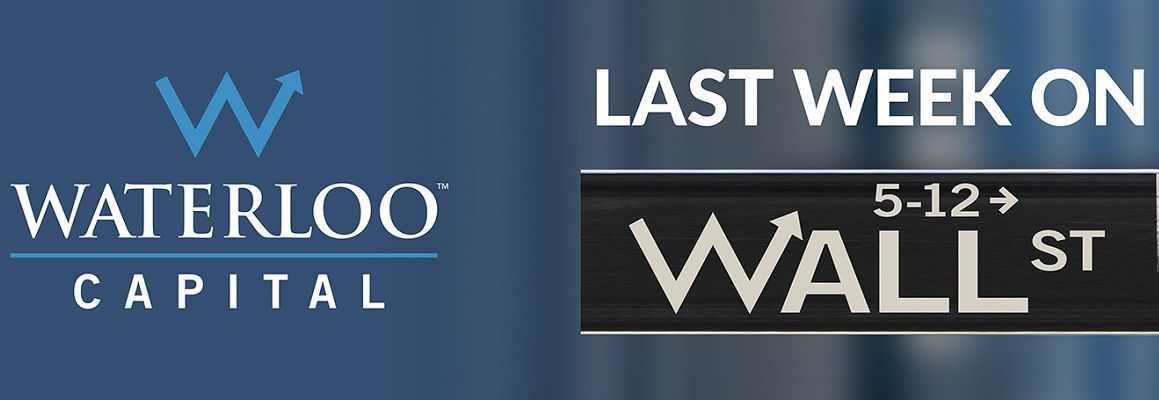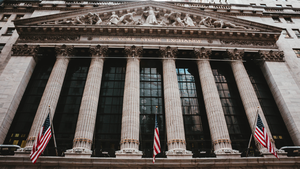S&P 500: 1.52% DOW: 0.96% NASDAQ: 2.82% 10-YR: 1.31%

Last Week on WallStreet - August 28
What Happened?
Jerome Powell ended up not rocking the boat yesterday as he gave his Jackson Hole speech. Investors were monitoring Powell’s speech for clues about when the Fed might start to scale back its easy-money policies. The central bank has been conducting $120 billion in monthly asset purchases to juice the economic recovery, while holding its benchmark short-term interest rate near zero. Such policies have helped propel major stock indexes to all-time highs. Overall markets were in the green last week led by Energy (+7.5%), Financials (+3.5%). More defensive areas of the market like Utilities (-2.0%) and Staples (-1.4%) lagged.
- Powell's much anticipated Jackson Hole speech
- Consumer spending
- Housing data
- Durable Goods
- Interesting articles from the Waterloo Watercooler

Jeff Cox - CNBC
Powell Sees Taper by Year End, But There's "Much Ground to Cover" Before Rate Hikes
- Powell acknowledged he advocated tapering purchases this year but was vague on the timeline
- Said rate hikes are not imminent as there is still "much ground to cover" before US hits full employment
- Noted the economy has seen more progress, especially in the labor market, but conveyed the delta variant could complicate the outlook
- Still confident the inflation surge is temporary
- Explained that tightening policy with substantial slack in the labor market could be a policy mistake
Markets reacted positively to the news, major indexes went higher as yields moved lower. Other fed presidents were more hawkish earlier in the week and even before his speech. On Thursday, benchmarks slipped after three Fed officials—Robert Kaplan, James Bullard, and Esther George—advocated for tapering of the central bank’s accommodative stance sometime this year.
The key takeaway is the comments were on the dovish side, and Powell is still walking a fine line. On one side, some worry inflation could get out of control and tapering assets would be ideal so the Fed can begin to raise rates to cool off the hotter readings we've seen the last few months. The other side thinks inflation will ease and worry if the Fed tightens too quickly due to only temporary gyrations in the economy they could, in turn, slow the economy at an unideal time. Tapering will continue to be a top headline the rest of the year and investors will wait and see what the Fed says at their next meeting in late September.

Jeffry Bartash - MarketWatch
Consumer Spending Slows in July, but Economy Still Has Plenty of Juice
Consumer spending rose by a modest 0.3% last month, matching estimates. Incomes surged 1.1% last month, boosted by new child-care tax credit approved as part of the last federal stimulus in March. Evidence in August suggests the delta variant might have curbed some spending on services, but that it hasn’t made a huge dent so far. The savings rate, meanwhile, rose to 9.6% from 8.8% in the prior month and easily exceeds pre-pandemic levels.
The key takeaway is spending has slowed since spring, when D.C. delivered more stimulus money for households. Yet it’s still rising fast enough to sustain an economic recovery. Americans are also continuing to shift spending toward services and away from goods. Delta aside, the biggest potential obstacle going forward is rising inflation tied to widespread shortages of labor and materials.

Jacob Passy - MarketWatch
Home Sales Rise as the Limited Number of Homes on the Market Improves
Existing-home sales rose 2% to a seasonally-adjusted, annual rate of 5.99 million in July. Compared with June 2020, home sales were up 1.5%. The median sales price of an existing home was up 17.8% year-over-year at $359,900, but was below the record set the month prior. Though inventory showed signs of improvement in July, the situation buyers face is much more difficult than a year ago. New-home sales increased 1% to an annual rate of 708,000. Compared to a year ago, sales were down more than 27%. The median price of a newly built home reached $390,500, a record high for the report.
The key takeaway is while the inventory picture remains fairly grim, even the middling signs of improvement demonstrated in July represent a major source of relief to home buyers. More homes on the market could mean less bidding wars and less price pressure. On the new home front, a sustained increase is unlikely. Even though the price of lumber has come off astronomical levels, the amount of demand for home-building continues to make supply and labor hard to come by.

Jeffry Bartash - MarketWatch
Durable Goods Slip on Weakness for Plane Demand, Rest of Economy Did Better
Orders for long-lasting goods slipped 0.1% last month. Yet if transportation-related goods such as autos and airplanes are set aside, new orders rose 0.7%. Orders for new airplanes sank almost 50% in July. Orders had soared in the prior 2 months. Business investment has risen more than 15% over the past year, but the rate of growth has slowed for 3 straight months from a recent peak of 25.8%. Part of the dropoff is the natural result of the economy almost fully reopening and the end of massive federal stimulus payments.
The key takeaway is the data is volatile but this was only the second drop in durable goods in the last 15 months. The weakness can be attributed mostly to new airplanes as demand was strong in other parts of the economy despite broad labor and materials shortages.These shortages have acted as a drag on the momentum of the economic recovery and are likely to persist for months

From the Waterloo Watercooler
31-year-old crypto mogul Justin Sun spent $611,710 to buy an EtherRock NFT, which is essentially just clipart of a rock.
Bus driver shortages are the latest challenge hitting US schools.
Delta employees will face $200 monthly increases on their health insurance premiums starting Nov. 1 if they aren’t vaccinated against Covid-19 due to the steep costs to cover employees who are hospitalized.
The Supreme Court is allowing evictions to resume across the United States, blocking the Biden administration from enforcing a temporary ban that was put in place because of the coronavirus pandemic.
After 18 months of disruption caused by the pandemic, New York has passed San Francisco as the most expensive market in the country with a median 1-bedroom rent of $2,810. San Francisco’s median is $2,800.
South Korea has become the first major Asian economy to raise interest rates since the coronavirus pandemic began.
